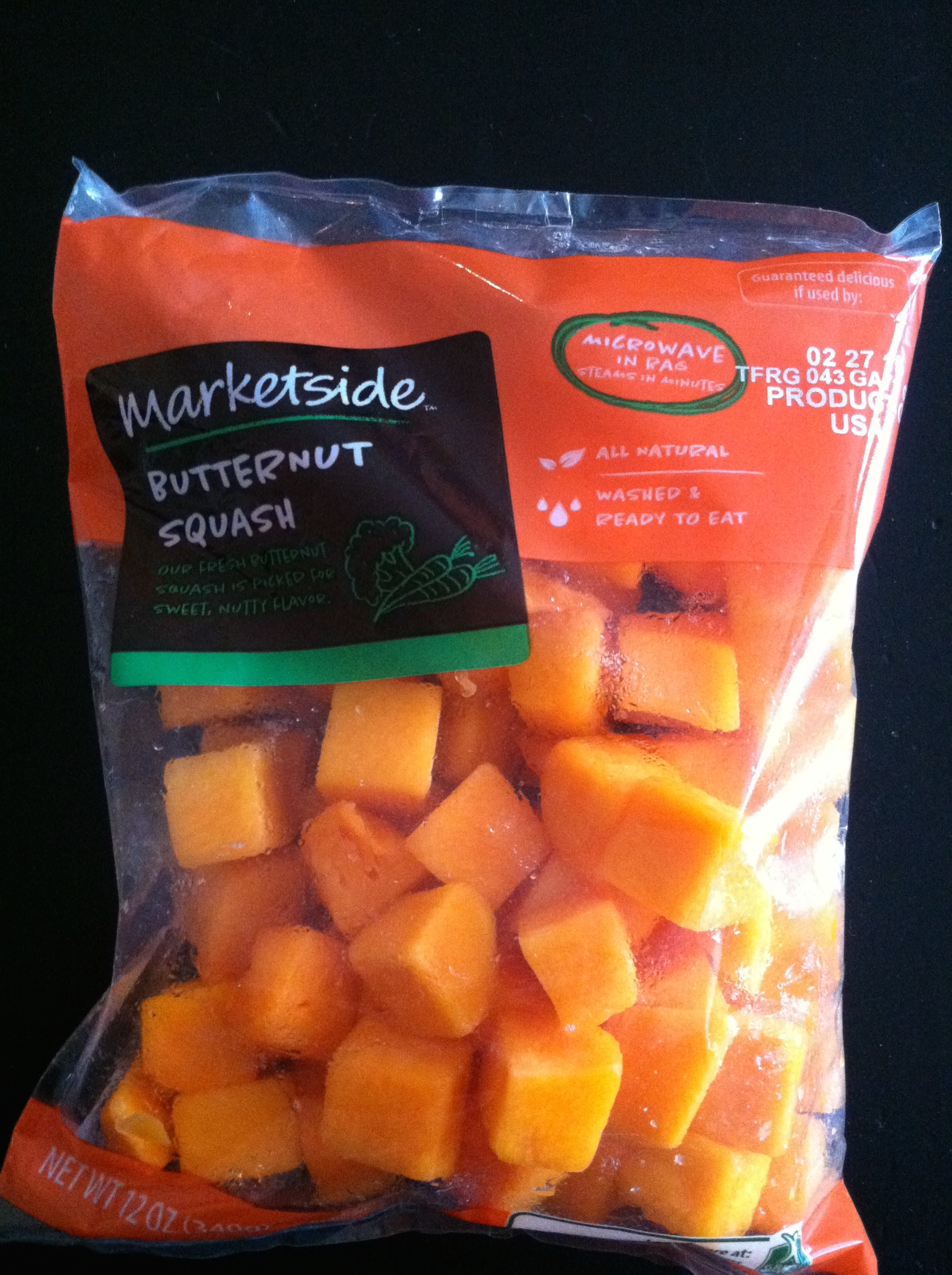The Thaw Before You Leap: Preparing Your Butternut Squash
Have you found yourself with a stash of frozen butternut squash, longing to transform it into a culinary delight? Fret not, for we’ll guide you through the art of thawing and cooking this frozen gem.

Image: www.pinterest.com
To commence, immerse your frozen squash in a bowl of cold water. Patiently watch as it gently releases its icy embrace. If time is of the essence, microwave your squash in short bursts, pausing to stir for even thawing.
Defrosting Dilemmas: Microwave Meltdowns and Water’s Embrace
When embarking on a microwave defrosting mission, employ caution. Use power levels between 30% and 50%, stirring frequently to prevent overcooking and unintended mushiness.
Water bath thawing, on the other hand, is a gentler method. Submerge your squash in a bowl filled with cold water. Change the water every 30 minutes to maintain coldness and expedite the defrosting process.
A Culinary Journey: Exploring the Butternut Squash’s Potential
Once thawed, the butternut squash presents a culinary canvas for your creativity. Unleash your inner chef and explore the myriad of dishes it can grace.
Roasting Revelation: Golden Goodness from the Oven
Preheat your oven to 425°F (220°C). Line a baking sheet with parchment paper and drizzle with olive oil. Halve your squash lengthwise, removing seeds, and brush liberally with the oil and seasonings of your choice. Roast for 40-50 minutes or until fork-tender, revealing a tender and caramelized masterpiece.

Image: theweightofmyweight.com
Microwaving Magic: Speedy Squash in Minutes
Pierce your squash several times with a fork, place in a microwave-safe dish, and splash with water. Microwave on high for 7-9 minutes per pound of squash or until tender. This method provides quick and easy nourishment, perfect for a time-pressed culinary adventure.
Steaming Serenity: Gentle Heat for Preserving Flavors
Fill the bottom of your steamer with water and bring to a boil. Place squash cubes or slices in the steamer basket and steam for 10-15 minutes, or until tender and vibrantly colored. Steaming preserves nutrients and yields a delectable dish with a subtle taste.
Sauté Success: Pan-Fried Delight for Everyday Indulgence
Heat olive oil in a large skillet over medium heat. Add diced butternut squash and sauté for 8-10 minutes while stirring occasionally. Infuse the squash with herbs and spices to enhance its flavor profile. Sautéing delivers a quick and convenient solution for a savory side dish or an addition to a wholesome main course.
Soup Sensations: A Warm Embrace in Bowlfuls
In a large pot, sauté onions and garlic in olive oil until softened. Add thawed butternut squash, vegetable broth, salt, and pepper. Bring to a boil, reduce heat, and simmer for 20-25 minutes, or until squash is tender. Puree the mixture with an immersion blender or regular blender until smooth and velvety. Whet your appetite with a warm and comforting bowl of butternut squash soup.
The Frozen Butternut Squash Legacy: A Journey Through History
Butternut squash, with its alluring sweetness and versatile nature, has a rich history rooted in the heart of North America. Native Americans cultivated this winter squash for centuries, using it as a staple food source.
Its culinary journey continued with the arrival of European settlers, who incorporated it into their own cuisines. Butternut squash made its way around the globe, becoming a prized ingredient in homes and restaurants worldwide.
Freezing Wisdom: Preserving the Harvest’s Bounty
Freezing butternut squash is an art of preservation, enabling us to savor its deliciousness year-round. Simply cut the squash into cubes or slices, and spread them on a baking sheet lined with parchment paper. Freeze for 2-3 hours, or until solid. Transfer to freezer-safe bags or containers and store for up to 6 months.
Thawing Tips and Expert Advice: Mastering the Secrets
- Never thaw butternut squash at room temperature: This encourages bacterial growth, compromising both safety and taste.
- Microwave defrosting: Use low power settings and pause to stir for even thawing.
- Steam defrosting: Place frozen squash in a steamer basket over boiling water for rapid and gentle thawing.
- Cold water thawing: Submerge frozen squash in cold water, changing water every 30 minutes for faster results.
Frequently Asked Questions: Unraveling the Mysteries
Q: Can I cook frozen butternut squash without thawing it?
A: Not recommended. Cooking frozen squash without thawing may result in uneven cooking and an unappetizing texture.
Q: What is the best way to season butternut squash?
A: Experiment with spices like cinnamon, nutmeg, and ginger for a warm and fragrant dish. Salt and pepper enhance its natural sweetness. Fresh herbs like sage and thyme add a savory touch.
Q: Can I freeze cooked butternut squash?
A: Yes, cooked butternut squash can be frozen for future meals. Store in airtight containers or freezer-safe bags for up to 2 months.
How To Cook Frozen Butternut Squash
A Call to Culinary Adventure: Unleash Your Butternut Squash Prowess
Whether you’re a seasoned chef or a culinary novice, we hope this comprehensive guide has empowered you to conquer the art of cooking frozen butternut squash. Embark on your culinary journey, experimenting with different cooking methods and flavors, and relish the delicious results.
Are you ready to elevate your cooking game and transform frozen butternut squash into a culinary masterpiece?